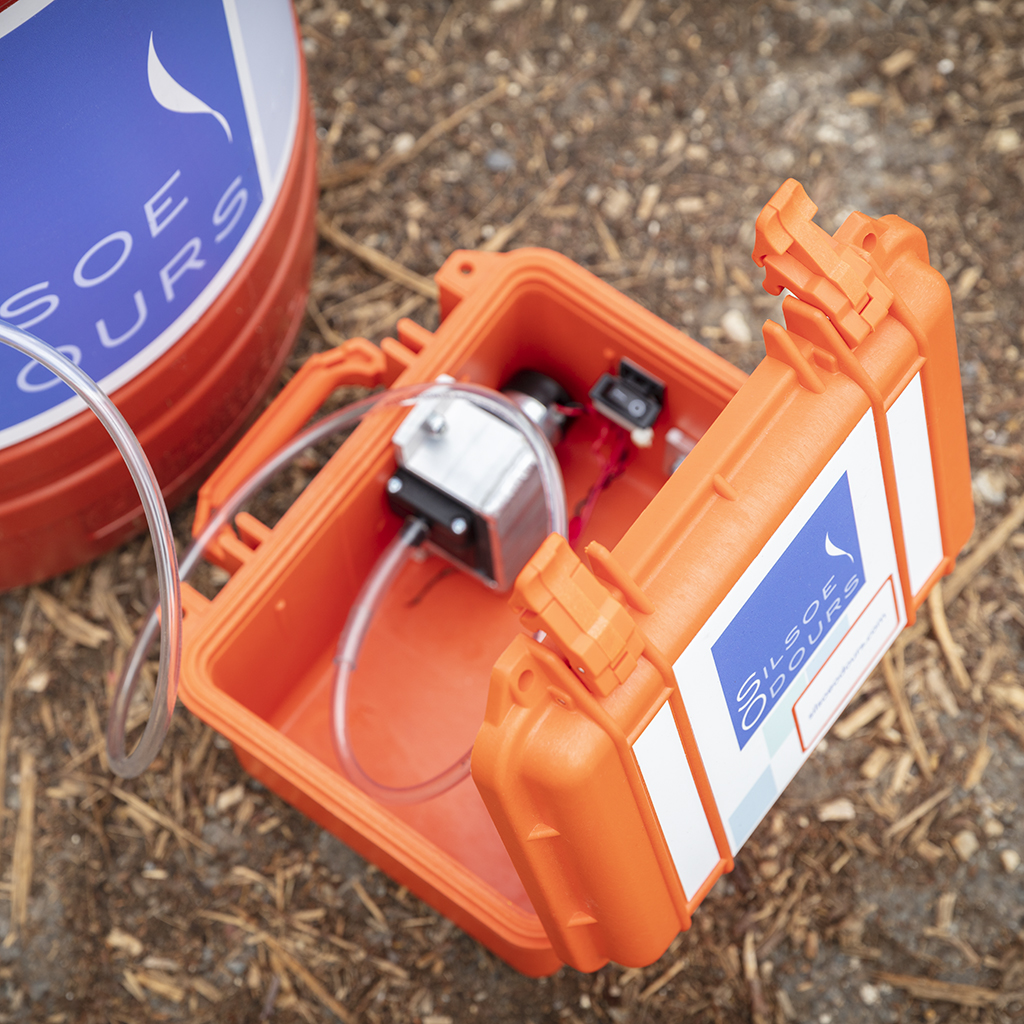COMMON ODOUR SOURCES: Know How To Spot Potential Odour Problems

[vc_row][vc_column][vc_column_text]Odour complaints are the second highest cause of environmental complaints, after noise. That is why, for operators, it is important to understand potential odour sources. If you recognise potential pitfalls, you can limit unexpected odour emissions. You can then manage your site in line with your regulatory obligations, and minimise complaints. [/vc_column_text][vc_separator][/vc_column][/vc_row][vc_row][vc_column][vc_column_text]
UNDERSTANDING ODOUR
[/vc_column_text][vc_column_text]Unpleasant odours can impact the health and well-being of those who live and work nearby. As a result, odour emissions are limited by law. Regulated industries are subject to odour limits, specified in their operating permits.
Odour occurs due to a mixture of chemical compounds in the air that we can smell. An odour may be considered a nuisance, depending on its frequency and intensity. There are many sources of odour, which we will explore in this article.[/vc_column_text][vc_separator][/vc_column][/vc_row][vc_row][vc_column][vc_column_text]
COMMON SOURCES OF ODOUR
[/vc_column_text][vc_column_text] In industrial settings, there are many potential sources of odour emissions. Often, these odours indicate underlying operational challenges. Understanding the origins of odour problems is essential. Doing so will help you maintain a safe, efficient and compliant site. Here, we explore some of the most common sources of industrial odours. [/vc_column_text][/vc_column][/vc_row][vc_row][vc_column][info_list icon_bg_color=”#514f9d” icon_color=”#514f9d” font_size_icon=”24″ connector_color=”#514f9d”][info_list_item list_title=”Volatile Organic Compounds”] Volatile organic compounds (VOCs) cause odours which are detectable by humans. VOCs are released during some manufacturing processes. For example, during solvent use or in chemical reactions. There are several techniques to mitigate the impact of VOCs. Your choice will depend on your operation. Techniques include adsorption, chemical scrubbing and biofiltration. [/info_list_item][info_list_item list_title=”Inadequate Ventilation Systems”]Industrial sites should have effective ventilation systems in place. They should extract and disperse odours without causing a nuisance. If these systems are inadequate, you risk odours becoming problematic.[/info_list_item][info_list_item list_title=”Improper Storage and Handling”]Odour emissions can occur during improper storage and handling of raw materials. Review your procedures around exposed surface areas of raw materials. Also, look at stores, vehicle unloading and handling of putrescible materials. You can contain odours from these sources in several ways. For example, use covered process equipment, or lidded hoppers for raw materials. You can then duct the contained odour to abatement equipment. This will ensure it doesn’t escape the building.[/info_list_item][info_list_item list_title=”Equipment Malfunctions”]When equipment fails, it can cause problematic odours. For example, leaks in pipelines or tanks can cause the release of odour emissions. Implementing good monitoring and maintenance practices will help you avoid this scenario.[/info_list_item][info_list_item list_title=”Building Leakage”]Odour emissions often escape buildings from open or poorly sealed doors and windows. They can also escape from small holes that you may not even be aware of. You can take steps to ‘odour-proof’ buildings and containers. Ensure your building is well sealed. Also, consider emissions that occur during vehicle entry. Fast-acting doors and custom-made strip curtains can minimise emissions in this case. You will need to conduct careful testing to ensure your building is odour-proof.[/info_list_item][info_list_item list_title=”Biological Processes”]Biological processes can generate unpleasant odours. For example, the growth of mould or bacteria in moist environments. If you conduct these processes, ensure you understand the associated emissions.[/info_list_item][/info_list][/vc_column][/vc_row][vc_row][vc_column][vc_separator][vc_column_text]
ODOUR SOURCES BY INDUSTRY
[/vc_column_text][/vc_column][/vc_row][vc_row][vc_column width=”1/4″][interactive_banner banner_title=”Waste Management, Composting & Landfill” banner_desc=”Possible odour sources include decomposing organic waste, landfill gas, leachate, compost piles, chemical waste, aerosolized particles and biological activity. Poorly managed vehicles, equipment and waste handling can also contribute to odour problems. ” banner_image=”id^19258|url^https://silsoeodours.com/wp-content/uploads/2020/11/DMP-Metals.jpg|caption^null|alt^Waste management, composting and landfill sites are all at risk of producing unpleasant odours and would benefit from an odour management plan|title^Waste Management|description^null” banner_height=”ult-banner-block-custom-height” banner_height_val=”260″ link_opts=”box” banner_link=”url:https%3A%2F%2Fsilsoeodours.com%2Fwaste-management-composting-landfill%2F|||” heading_title_color=”#514f9d” banner_bg_color=”#b8b4da” banner_overlay_bg_color=”#514f9d” banner_title_font_family=”font_family:Lato|font_call:Lato|variant:700″ banner_title_style=”font-weight:700;” banner_desc_font_family=”font_family:Lato|font_call:Lato|variant:300″ banner_desc_style=”font-weight:300;” banner_desc_font_size=”desktop:14px;”][/vc_column][vc_column width=”1/4″][interactive_banner banner_title=”Biofuels & Anaerobic Digestion” banner_desc=”There are many potential odour sources, including decomposing feedstock materials, biogas production, digestate, fermentation and distillation, effluent treatment and waste storage. Regular checks will help minimise emissions from these areas. ” banner_image=”id^21998|url^https://silsoeodours.com/wp-content/uploads/2023/09/20230712_120419-scaled.jpg|caption^null|alt^Biofilters are possible odour sources and are commonly used on AD sites |title^Biofilter|description^null” banner_height=”ult-banner-block-custom-height” banner_height_val=”260″ link_opts=”box” banner_link=”url:https%3A%2F%2Fsilsoeodours.com%2Fbiofuels-anaerobic-digestion%2F|||” heading_title_color=”#514f9d” banner_bg_color=”#b8b4da” banner_overlay_bg_color=”#514f9d” banner_title_font_family=”font_family:Lato|font_call:Lato|variant:700″ banner_title_style=”font-weight:700;” banner_desc_font_family=”font_family:Lato|font_call:Lato|variant:300″ banner_desc_style=”font-weight:300;” banner_desc_font_size=”desktop:14px;”][/vc_column][vc_column width=”1/4″][interactive_banner banner_title=”Intensive Farming” banner_desc=” Intensive farming produces odour emissions due to the proximity of livestock and waste volumes. Odour sources include animal housing and waste, manure and feed storage, silage, crop residue and chemical use.” banner_image=”id^14503|url^https://silsoeodours.com/wp-content/uploads/2019/09/cropped-Poultry-farming-Victoria-odour-sampling.jpg|caption^null|alt^Intensive farming clients should have an odour management plan in operation|title^Intensive farming|description^https://silsoeodours.com/wp-content/uploads/2019/09/cropped-Poultry-farming-Victoria-odour-sampling.jpg” banner_height=”ult-banner-block-custom-height” banner_height_val=”260″ link_opts=”box” banner_link=”url:https%3A%2F%2Fsilsoeodours.com%2Fintensive-farming%2F|||” heading_title_color=”#514f9d” banner_bg_color=”#b8b4da” banner_overlay_bg_color=”#514f9d” banner_title_font_family=”font_family:Lato|font_call:Lato|variant:700″ banner_title_style=”font-weight:700;” banner_desc_font_family=”font_family:Lato|font_call:Lato|variant:300″ banner_desc_style=”font-weight:300;” banner_desc_font_size=”desktop:14px;”][/vc_column][vc_column width=”1/4″][interactive_banner banner_title=”Food Processing” banner_desc=”Assess handling and processing procedures of raw ingredients. Pay close attention to fish, seafood, spices and seasonings. Cooking, baking and frying can all produce odours. Also consider waste disposal, cleaning chemicals and equipment.” banner_image=”id^14186|url^https://silsoeodours.com/wp-content/uploads/2019/09/Bovingdon4.jpg|caption^null|alt^Food processing plants have many possible areas where odours can escape|title^food processing plant, odour assessors on cherry picker|description^null” banner_height=”ult-banner-block-custom-height” banner_height_val=”260″ link_opts=”box” banner_link=”url:https%3A%2F%2Fsilsoeodours.com%2Ffood-processing%2F|||” heading_title_color=”#514f9d” banner_bg_color=”#b8b4da” banner_overlay_bg_color=”#514f9d” banner_title_font_family=”font_family:Lato|font_call:Lato|variant:700″ banner_title_style=”font-weight:700;” banner_desc_font_family=”font_family:Lato|font_call:Lato|variant:300″ banner_desc_style=”font-weight:300;” banner_desc_font_size=”desktop:14px;”][/vc_column][/vc_row][vc_row][vc_column width=”1/4″][interactive_banner banner_title=”Development & Planning” banner_desc=”Building materials like paints, adhesives and sealants can emit chemical odours. Pouring and mixing concrete, asphalt and paving can all generate strong odours. Construction vehicles and heavy machinery create fumes and dust. ” banner_image=”id^20393|url^https://silsoeodours.com/wp-content/uploads/2022/03/Untitled-design-2019-06-06T120557.682.jpg|caption^Planning regulations usually require an odour survey. For smaller developments this could be an odour assessment survey or for larger developments you may require an odour sampling survey or odour dispersion model.|alt^Planning regulations usually require an odour survey. For smaller developments this could be an odour assessment survey or for larger developments you may require an odour sampling survey or odour dispersion model.|title^Housing Development Site|description^null” banner_height=”ult-banner-block-custom-height” banner_height_val=”260″ link_opts=”box” banner_link=”url:https%3A%2F%2Fsilsoeodours.com%2Fplanning-development%2F|||” heading_title_color=”#514f9d” banner_bg_color=”#b8b4da” banner_overlay_bg_color=”#514f9d” banner_title_font_family=”font_family:Lato|font_call:Lato|variant:700″ banner_title_style=”font-weight:700;” banner_desc_font_family=”font_family:Lato|font_call:Lato|variant:300″ banner_desc_style=”font-weight:300;” banner_desc_font_size=”desktop:14px;”][/vc_column][vc_column width=”1/4″][interactive_banner banner_title=”Rendering” banner_desc=”Decomposing raw materials and the rendering process itself can generate strong, unpleasant odours. Grease and fat storage can be a problem if not well sealed or maintained. Transportation vehicles and cooking equipment also need close attention. ” banner_image=”id^19356|url^https://silsoeodours.com/wp-content/uploads/2020/11/Rendering-Robert-scaled.jpg|caption^null|alt^Robert Sneath and the team at Silsoe Odours can provide expert odour assessment guidance|title^Rendering – Robert|description^null” banner_height=”ult-banner-block-custom-height” banner_height_val=”260″ link_opts=”box” banner_link=”url:https%3A%2F%2Fsilsoeodours.com%2Frendering%2F|||” heading_title_color=”#514f9d” banner_bg_color=”#b8b4da” banner_overlay_bg_color=”#514f9d” banner_title_font_family=”font_family:Lato|font_call:Lato|variant:700″ banner_title_style=”font-weight:700;” banner_desc_font_family=”font_family:Lato|font_call:Lato|variant:300″ banner_desc_style=”font-weight:300;” banner_desc_font_size=”desktop:14px;”][/vc_column][vc_column width=”1/4″][interactive_banner banner_title=”Waste Water & Sewerage” banner_desc=”Wastewater treatment can cause odours, due to the composition of organic solids and release of gases. Other sources include anaerobic digesters, aeration tanks and sludge handling. Waste receiving stations and sewer vent stacks may also pose challenges. ” banner_image=”id^14203|url^https://silsoeodours.com/wp-content/uploads/2019/09/Kendal-Sampling-3.jpg|caption^null|alt^Waste water and sewerage sites are particularly prone to odour challenges|title^waste water site|description^null” banner_height=”ult-banner-block-custom-height” banner_height_val=”260″ link_opts=”box” banner_link=”url:https%3A%2F%2Fsilsoeodours.com%2Fwaste-water-sewage%2F|||” heading_title_color=”#514f9d” banner_bg_color=”#b8b4da” banner_overlay_bg_color=”#514f9d” banner_title_font_family=”font_family:Lato|font_call:Lato|variant:700″ banner_title_style=”font-weight:700;” banner_desc_font_family=”font_family:Lato|font_call:Lato|variant:300″ banner_desc_style=”font-weight:300;” banner_desc_font_size=”desktop:14px;”][/vc_column][vc_column width=”1/4″][interactive_banner banner_title=”Commercial & Restaurant Kitchens” banner_desc=”Consider cooking fumes, grease and oils, and avoid burnt or overcooked food. Raw materials such as seafood, spices and herbs release strong odours. Other sources are food waste, garbage disposal, storage areas and cleaning chemicals.” banner_image=”id^18463|url^https://silsoeodours.com/wp-content/uploads/2019/09/Commercial-Kitchen-2.jpg|caption^null|alt^Cooking smells from commercial and restaurant kitchens are a common odour source which generates complaints|title^Commercial Kitchen vent|description^null” banner_height=”ult-banner-block-custom-height” banner_height_val=”260″ link_opts=”box” banner_link=”url:https%3A%2F%2Fsilsoeodours.com%2Fcommercial-restaurant-kitchens%2F|||” heading_title_color=”#514f9d” banner_bg_color=”#b8b4da” banner_overlay_bg_color=”#514f9d” banner_title_font_family=”font_family:Lato|font_call:Lato|variant:700″ banner_title_style=”font-weight:700;” banner_desc_font_family=”font_family:Lato|font_call:Lato|variant:300″ banner_desc_style=”font-weight:300;” banner_desc_font_size=”desktop:14px;”][/vc_column][/vc_row][vc_row][vc_column][vc_separator][vc_column_text]
ODOUR ASSESSMENT AND CONSULTATION
[/vc_column_text][/vc_column][/vc_row][vc_row][vc_column width=”1/4″][vc_column_text]

[/vc_column_text][/vc_column][vc_column width=”3/4″][vc_column_text]
[/vc_column_text][/vc_column][/vc_row][vc_row][vc_column][vc_separator][vc_column_text]
PREVENTING FUTURE ODOUR ISSUES
[/vc_column_text][vc_column_text]To keep on top of possible odour sources, you can take proactive steps. Firstly, identify all areas where there could be potential issues. Then, implement best practices to properly track and maintain processes and equipment. Make sure to consider the following:
Proper waste management
Ensure effective storage, handling, containment and disposal. Conduct regular cleaning and maintenance.
Install effective odour control systems
For example, chemical scrubbers or biofilters. Well-designed odour abatement equipment is also valuable.
Well-ventilated and sealed buildings
Smoke testing can help you keep track of how ‘odour-proof’ your buildings are.[/vc_column_text][vc_separator][/vc_column][/vc_row][vc_row][vc_column][vc_column_text]
ASSESS YOUR EXISTING ODOUR SOURCES
[/vc_column_text][vc_column_text]
[/vc_column_text][vc_btn title=”Click here to assess your Odour Sources today!” color=”primary” size=”lg” align=”center” link=”url:https%3A%2F%2Fsilsoeodours.com%2Fcontact-us%2F|||” button_block=”true”][vc_separator][/vc_column][/vc_row][vc_row][vc_column][/vc_column][/vc_row]

